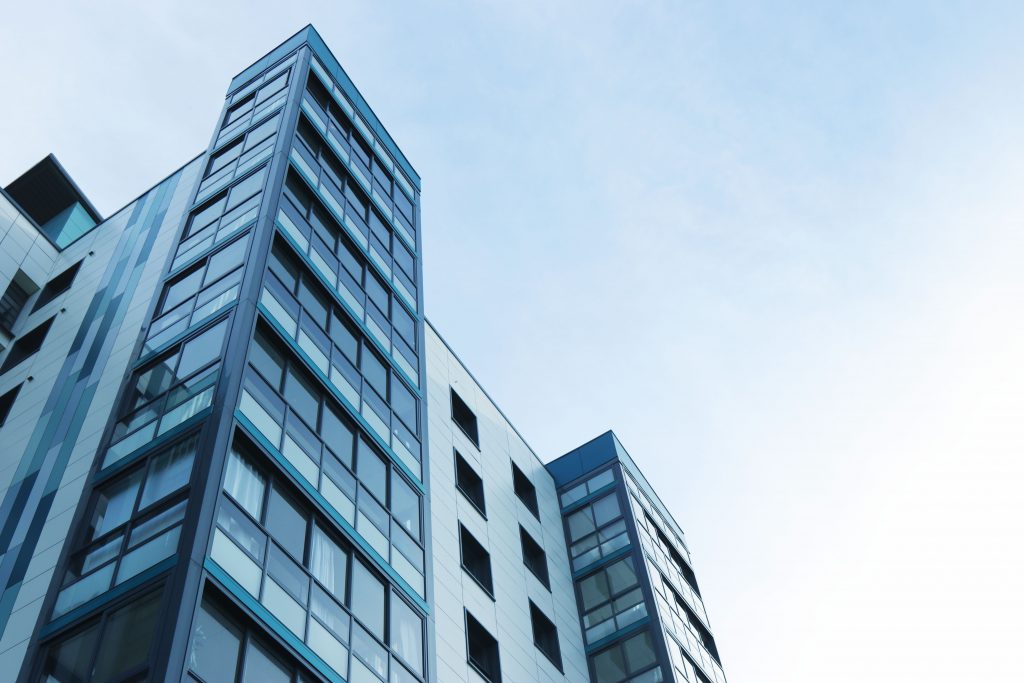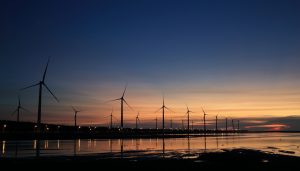Why Wind Turbines Do Not Work In Cities

A recent post in the San Francisco Chronicle outlined why the new Public Utilities Commission headquarters is not quite as green as intended. The LEED Platinum building was “touted as the very energy-efficient construction on the continent.” The building has some fantastic features. By way of instance, the natural venting design permits the construction to operate with no air conditioning on average days, which can be many in San Francisco. It may sound simple, but most windows in office buildings are locked closed, requiring electricity intensive air conditioning all day, each day. The building also houses one of the first blackwater treatment methods in America. The machine recycles wastewater for non-potable uses throughout the facility. While Australia has been doing it for 15 years, getting the system through intensive US regulations was quite a feat!
The article’s focus is on how the wind turbines incorporated with the building facade simply don’t work. This isn’t a new issue. For many years, newer green construction designers have tried to integrate the technology on our buildings. I am asked at least once in a few months whether we are supposed to consider wind turbines for any green building project. Amongst the sea of office leasing buildings in Melbourne CBD, Australia, the Council House 2 has been one of the greenest buildings constructed in 2006. The bright yellow turbines on the roof signify the government’s devotion to sustainability. However, these are just a motionless symbol and have accumulated negligible amounts of electricity over the past decade. At Arizona State University’s Global Institute for Sustainability, you can get an up-close look at the facility’s six roof-mounted turbines standing perfectly still. Finally, we have the turbines sitting on top of the home stadium of the beloved Philadelphia Eagles. From the only movie I could detect together spinning, they spin too slowly to produce measurable power. In the majority of videos, they’re as static as Andy Reid’s fourth quarter crime.A fast guide to how these turbines operate:
A wind turbine grabs the end to create electricity. The end makes the rotor twist; as the rotor spins, the motion of these blades pushes a generator that produces energy. The movement of the blades spinning is kinetic energy. It is the power that we convert to electricity.
The largest wind turbines generate enough electricity in a year (about 12 megawatt-hours) to provide about 600 U.S. homes. A single wind farm can have tens and sometimes hundreds of those tanks lined up in particularly windy spots. Smaller turbines constructed at a backyard can produce enough electricity for a single residence or small company.

The main reason that these systems fail is simple physics. Since the wind blows, friction in the ground creates turbulence which slows down the stream of air. This is particularly true in cities, where the varying heights of buildings, cars, and roads create wind shadows that impede laminar flow. Every wind turbine has a minimum wind speed required to make even a drop of power. We call this “cut-in rate,” which typically hovers around 6 miles for many high output turbines. Vertical Axis Wind Turbines, such as those on Lincoln Financial Field, boast a decrease cut-in speed, but still, require laminar flow to make consistent power. Next, we must examine the power curve of a wind turbine. It may begin to generate power at 6 mph, but it does not meet its rated power until 31 miles!
The need for high speeds is the reason why we tend to make wind turbines as tall as you can. The bigger you get off the floor, the quicker the wind generates power for buildings in Australia. As a baseline, the most common height for most turbines is around 260 ft. We also want the blades to be big. The power capacity of a turbine relies on the”swept area” of its blades. This means that if you double the distance of the blades, then you can have four times as much energy! (it is a pie-r-squared thing.) These small building-mounted systems never stood as an opportunity.
Does this mean the Public Utilities Commission got it wrong? Those wind turbines might not work, but they sure got a lot of press when the building started. I am sure that they have inspired more than one school student or young professional to join the green building movement. An engineer may produce a good deal more cash designing bombs at Northrup Grumman or helping drill for oil in Texas. In order to make the transition into a fossil fuel free culture, we need the smartest people to be motivated enough to work for something that they believe in. With enough of those bright young minds we might only beat climate change after all. So, kudos to 525 Golden Gate Avenue for helping to inspire the next generation. But the next time, when you are thinking of investing on wind turbines at your retail leasing, low-rise building, use the cash to build more solar panels instead. The rooftop panels only produce 7 percent of the energy the building uses, which is not even close to the Zero Net Energy future we desire.
